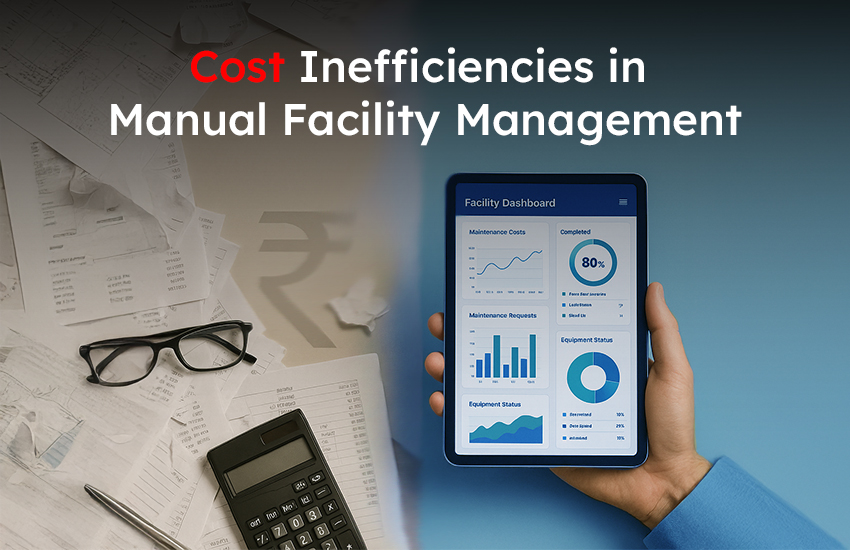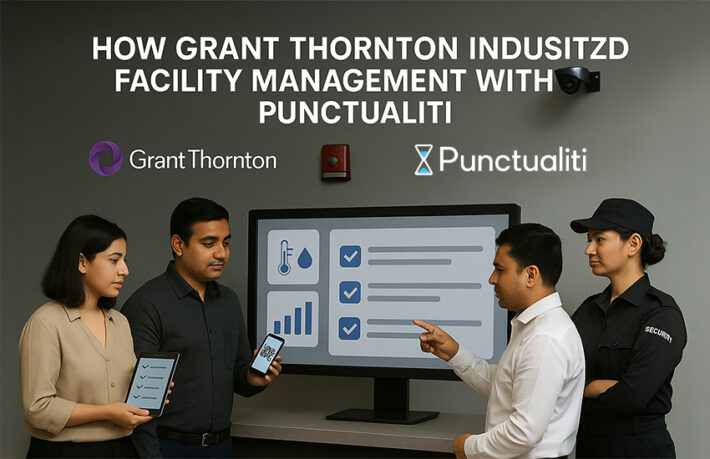The Hidden Costs of Manual Facility Management

Introduction: When Manual Methods Cost More Than You Think
Manual facility management—tracking maintenance on Excel sheets, relying on verbal handoffs, juggling WhatsApp messages—might seem “free” or straightforward. But beneath the surface, it carries heavy hidden costs: downtime, compliance risks, and wasted manpower. This blog explores the true price of manual systems and shows how digital transformation can uncover value and efficiency.
1. Hidden Cost #1: Increased Downtime and Reduced Productivity
- Reactive vs proactive: Without alerts or automated scheduling, maintenance happens after failure—not before.
- Extended downtime: Trucks wait. Machines idle. Employees stand around. Every minute counts.
Case in point: A mid‑size commercial facility we audited experienced a 30% longer average repair time—all due to manual ticketing and delayed assignments.
2. Hidden Cost #2: Human Error = Compliance Risks & Safety Issues
- Missed checklists: Paper forms get lost—inspections skipped, logs incomplete.
- Wrong data, wrong decisions: Manual entry leads to compliance violations and safety hazards.
Impact: Fines from local regulators, longer audit prep times, and staff safety vulnerabilities.
3. Hidden Cost #3: Communication Breakdowns Across Teams
- No unified system: Tasks sent via WhatsApp, calls, and sticky notes. No oversight.
- No visibility for managers: Progress is unknown until the end of the day, leaving leaders in the dark.
Effect: Redundant efforts, disengaged teams, and unhappy tenants/customers.
4. Hidden Cost #4: Wasted Labor and Overtime
- Multiple follow-ups: Facility staff spend significant time chasing updates—time that could be spent working.
- Overtime sneaks in: Manual coordination and duplication increase staff hours—and payroll.
Real outcome: Across clients, we measured a typical 10–15% drop in labor costs after digitization.
5. Hidden Cost #5: Limited Scalability & Insight
- Excel limits: As sites and teams grow, spreadsheets collapse under scale.
- No data-driven decisions: Historical analysis is impossible without properly tagged tasks and records.
Missed opportunity: No insight on peak usage times, asset health, or team productivity trends.
The Digital Solution: Smart Facility Management Tools
A. Automated Task Dispatch
- Avoid delays with priority-based scheduling and digital assignment
B. Real-Time Communication
- Push notifications and mobile updates eliminate lag and handoff errors
C. Digital Checklists & Compliance
- Capture mandatory forms and logs via mobile, not paper
D. Audit-Ready Logging
- Every action timestamped and traceable automatically
E. Actionable Analytics
- Dashboards give insight into performance, costs, asset health
Real-World ROI: What Clients See
| Improvement Area | Before | After |
| Repair turnaround time | +30% | – |
| Compliance issues | Frequent | Rare |
| Labor hours per week | High | –12% |
| Report generation time | Days | Minutes |
Clients report fewer violations, less overtime, and faster response times—all driving both performance and cost optimization.
Uncover the True Cost of Manual FM
- Hidden costs add up quickly—even when the tools scream “free.”
- Systems that scale keep clarity and momentum in growing sites.
- Blind spots in compliance and operations aren’t minor: they’re expensive.
Conclusion:
To avoid choosing expensive failure, shift from manual to digital. Start small—maybe a single checklist app—and watch how transparency transforms operations. Looking to shift from messy manual processes to scalable facility management? Discover how Punctualiti supports better operations—book a demo today.

